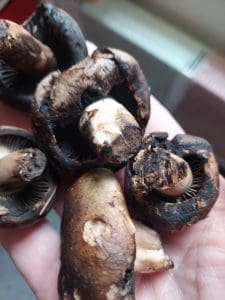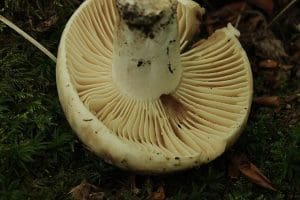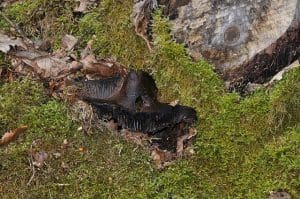Blackening Brittlegill / Summer / Autumn / Toxic
Blackening Brittlegill (Russula nigricans) is found predominantly in deciduous and mixed woodlands across Europe and North America, this mushroom stands out due to its dramatic colour transformation from white to black as it ages.
The Blackening Brittlegill features brittle, white gills that bruise and turn black when handled, a thick and robust stem, and a cap that shifts in hue and texture over time. Despite its lack of a strong odor, identifying this mushroom requires a keen eye and careful observation.
In this blog post, we’ll delve into the distinguishing traits of the Blackening Brittlegill, providing tips and insights to help you accurately identify this intriguing fungus during your woodland explorations.
Whether you’re an experienced forager or a curious beginner, this guide will enhance your appreciation for the diverse world of fungi.
Scientific Name
Russula nigricans
Common Names
Blackening Brittlegill
Family
Russulaceae
Habitat
Like other Russula species, they are ectomycorrhizal and can be found in broadleaf, mixed and coniferous woodlands.
They normally appear in rings.
Description
They are quite large for russula, getting up to around 20 cm across. Unlike most wild fungi, these blackened caps don’t just turn to mush and rot back into the ground. They dry up and look almost mummified, and you can find their black remnants lying around for months.
Identifying Features of Blackening Brittlegill:
Cap:
The cap is dirty white when young, but this turns orangey, brown upon handling, and then black on ageing. They measure 5–20 cm in diameter, and there is usually a depression in the centre of mature caps.
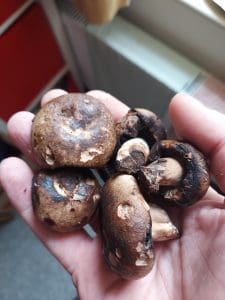
Stem:
The stem is white, firm, and straight, measuring between 5–8 cm long, it too blackens with age.
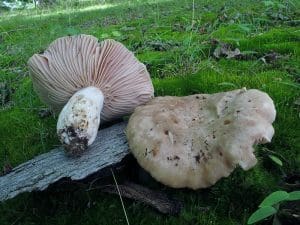
Gills:
When young the gills are off-white, widely spaced, and are adnate. These turn red then black, when bruised, quite quickly usually within 20 minutes. Like all Russulas the gills are brittle and will crumble when you handle them.
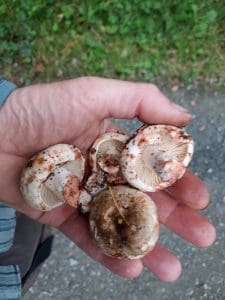
Smell:
Slightly fruity.
Spores:
White.
Potential lookalikes
Could easily be confused with Crowded Brittlegill (Russula densifolia) but this has crowded gills and does not go orangey brown upon handling before going black.
Find our introduction guide for Foraging for Brittlegills
Uses:
In food
Opinions vary, some class them as toxic, others not worthwhile and some say they are delicious.
It’s probably best to err on the side of caution, although I have eaten them personally without any problems.
Known hazards
This species is thought by some to contain toxins which could cause gastrointestinal upset.
Extra Notes
The ‘nigricans’ part of the scientific name, means ‘becoming black’.
References:
https://www.first-nature.com/fungi/russula-nigricans.php
https://explore.beatymuseum.ubc.ca/mushroomsup/R_nigricans.html



